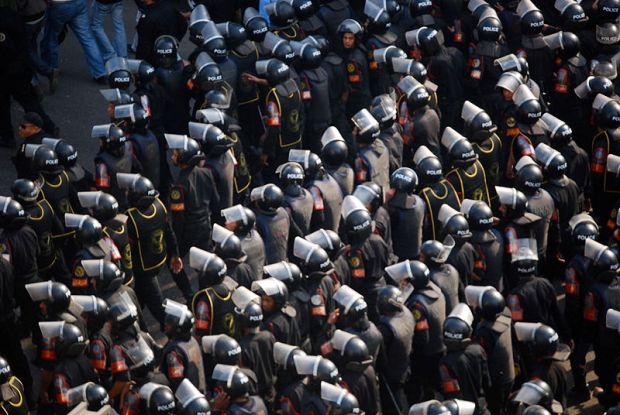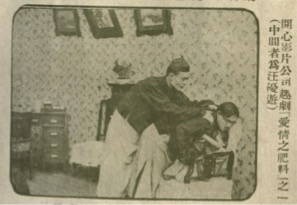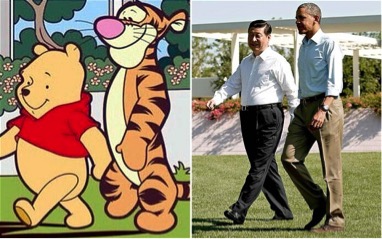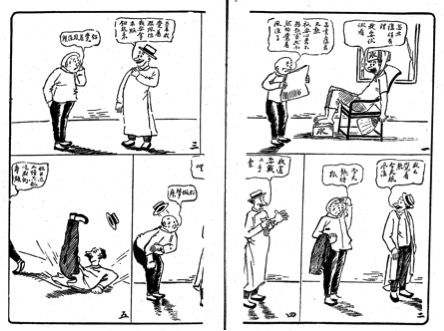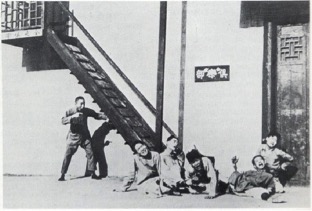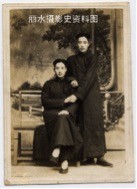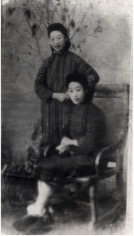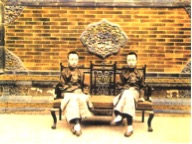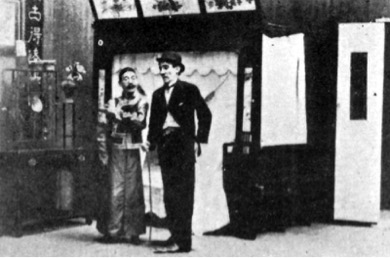Syllabi as Cultural Artifacts: MIT's Introduction to Media Studies (Part Two)
/Martin Roberts:
Some of what follows is quite anecdotal but you guys are just triggering too many synapses (“HASS-D courses" gave me a Proustian moment).
Henry, you do a great job here of sketching in the larger institutional context out of which the course emerged, the constraints it was working under, and how it set out to make a virtue out of necessity from them. In so doing, it did provide a great sampler of the interdisciplinary work on media going on at MIT at the time outside the Media Lab itself at the time, with only Glorianna Davenport’s lecture on the Interactive Cinema group originating from there.
The main thing that seems lacking in retrospect, allowing for the context at the time, was a unit on digital activism and the Electronic Frontier Foundation, which as you know in the ensuing decades has developed into a major field around all the work on Creative Commons - Siva Vaidhyanathan, Lawrence Lessig, et al. I recall that at the time Mike Fischer was teaching a course in STS called Ethics and Law on the Electronic Frontier, but am not sure why we didn’t invite him - perhaps because of the need to recruit Humanities/Literature faculty to the media cause, and the fact that Napster hadn’t happened yet and the piracy/intellectual property debate was still limited to the culture-jamming domain (Negativland). Little did we know then that only a few years later mp3 would make us all pirates...
Among several memories from my own lectures, one of the most interesting was the Culture Jamming one, during which a smart-ass student at the back of the class who’d plugged his laptop into an Ethernet port (no wifi then) started sending me live Zephyr messages (MIT’s instant messaging system) which kept popping up on the computer screen projected behind me—both a witty illustration both of culture-jamming itself and what we can now recognize as a primitive form of Live Tweeting.
Chris, I was part of the “dissident” group you mention for a few years, which was my main conduit to the Lab. For reasons I never quite understood, it was called the Narrative Intelligence group, and I believe was started by Amy Bruckman when she was working on her educational project MOOse Crossing. It also included some of the more interdisciplinary grad students at the lab who were interested in more humanistic approaches to media, whether in terms of narrative or “theory”: it was there that I met, in addition to Amy, Dave Tamés, Warren Sack, and Flavia Sparacino among others.
As you point out, the ML at the time behaved like it owned the term “media”, and the seminar was also attended by some who subscribed to the view of the upper echelons - I remember one student dismissing Chris Marker’s La Jetée that I’d just screened as “a slideshow”. Overall, though, the seminar was in retrospect one of the key interfaces between the ML and Humanities and was a great way to hear about upcoming events - I got to see Toshio Iwai presenting his new electronic instrument the Tenori-on there in the mid-90s, for example. The other main interface, as you’ll recall, was the Communications Forum, where I invited Julian Dibbell and Randy Farmer (of Habitat) to a panel to discuss virtual communities and governance after Julian’s piece on LambdaMOO in the Village Voice.
CK: Remarkably for a class at MIT—we didn’t touch on hacking or the MIT subcultures of hacking at all. . . . Nonetheless the fact that Adbusters, the EFF, plunderphonics, EBN and negativland were part of the class at the time is a kind of triumph.
Yes in retrospect that was kind of amazing. This points to one of the major cultural shifts between 97 and today, which is the transformation of the figure of the hacker from the "Revenge of the Nerds” stereotype into almost a folk-hero figure. We did touch on it with the culture-jammers but could never have anticipated that hacking would turn into a lifestyle on the one hand (the lifehacker movement) and political activism on the other (Anonymous). In any contemporary iteration of the course, it would be interesting to trace that genealogy from 80s/90s-era hacker culture (zines like 2600, Processed World) to its contemporary mutations. Hacker Mutations. I like that.
CK: the german media theory/media history schools have become much more de rigeur than they were in 1997. When we were teaching that class, reading Kittler felt like discovering a gold mine. Now it’s either old hat or canonical, but the Germans themselves have gone from Mediengeschicte and Medienwissenschaft to Kulturtechnik and Media Archaeology to hybridizing ANT and media theory (Akteur-Medien-Theorie) to god knows what else… I teach some of this stuff but I don’t think most people (in the US) see it as central.
I remember us being quite dismissive of Kittler at the time, particularly his writings about code and software. I haven’t really followed his work since, but the concept of discourse networks still seems useful. Media Archaeology I think should be part of any contemporary curriculum. I still don’t know enough about Actor-Network Theory to know where/whether it would fit in - what do you think and what would be essential readings there?
CK: in anthropology and STS the undisputed keyword for this is “infrastructure”—which in ’97 was something I remember talking about with people but which there was no literature about. Now I can’t imagine teaching the class without it being focused on platforms/infrastructure.
Definitely. I think Lisa Parks has been in the forefront of the media infrastructures movement since her book on satellites - the new anthology she co-edited with Nicole Starosielski, Signal Traffic, is a good place to start. I’m reading Nicole Starosielski’s book The Undersea Network right now, which is pretty interesting. It would be easy to see the infrastructures approach, perhaps, as a new form of technological determinism, but as I understand it the reverse is true: the point is that all media/communication technologies are themselves embedded within and shaped by geopolitical, social, economic, cultural, and discursive forces and conditions at particular historical moments - look at the relation of satellites and the first transatlantic broadcasts to the cold war and the Arab-Israeli conflict in ’67.
CK: Lastly there was a lot of Tamagotchi that year. There was also a lot of Bill Mitchell.
Bill was a wonderful man and I still miss him. His subtitle to E-Topia - “Urban Life, Jim—But Not As We Know It” remains one of my favorite subtitles and ST pop-culture refs of all time. I still have my old Tamagotchi somewhere: in 1997 I was showing TV clips about it in my intro to French culture class. Now of course we have this, aka Sherry Turkle’s worst nightmare (skip the ad): https://www.youtube.com/watch?v=oJq5PQZHU-I
Henry Jenkins:
I was certainly surprised that we did not make more of the MIT context -- whether understood in terms of the hacking culture or in terms of the larger debates surrounding new media at MIT in those years. Such topics would become increasingly central to the work of the Comparative Media Studies Program through the years, and so retrospectively, I tend to read them onto this earlier period.
We faced so many questions about why a media studies program belonged at MIT that we ended up incorporating a larger history of media research at MIT into our introductory subjects. Keep in mind that one of the major meeting spaces at MIT is named after Vannevar Bush (whose essay, “As We May Think,” is now widely credited as a key influence on the early development of the web) and that the top faculty prize is named after Doc Edgerton (who is today best known for his work on strobe photography). There was the rich legacy of Building 20 which was built as a temporary base for radar research during WWII and subsequently became the building where the MIT Model Railroad Club developed “Spacewars”, one of the first computer games; the place where much cybernetics research took place; the long-time office for Noam Chomsky and Janet Murray, etc. And this is not to speak to the long history of artistic experimentation in photography and filmmaking (Ricky Leacock, for example) which has been part of the MIT environment. Many of these strands eventually got integrated into our teaching, though I have no idea how they filtered down into the Introduction to Media Studies class.
As for the narrative intelligence reading group, I was part of the founding group there. It was created by Marc Davis and Mike Travers though Amy Bruckman was one of the founding members and eventually took over the group The name reflected the interests in narrative theory and artificial intelligence, though rarely did we talk about the meeting point between the two. It met once a week in the basement of the Media Lab, where students and faculty read through emerging digital theory together, shared reports on new media developments, and otherwise talked through the intersections between humanistic research and technological development.
The group of people who participated in those discussions was extraordinary. It had a huge impact on my own thinking, since I had just got an email account at the time I started going to those meetings. Gradually, as time demands on an assistant professor increased, I stopped coming, so I had no idea that Martin had participated in the group at a later stage. In many ways, they were a model for what Comparative Media Studies became.
When we launched our first graduate class, we did not yet have any students of our own so all of the participants came from the Media Lab or STS. But the Lab leadership never valued such exchanges, and subsequent generations of MAS students were less interested in this kind of theory, less interested in grounding their work in actual communities, etc., and I became more and more disenchanted with what the Lab had become, which may be why there was so little crossover by the time we launched that class. Mike and Marc published an account of the group’s history which I found online -- http://www.cs.cmu.edu/afs/cs/user/michaelm/www/nidocs/DavisTravers.pdf There have now been several books published on the topic of narrativ intelligence, which is starting to be recognized as its own subfield.
One of the things that amused me looking at the syllabus was that Martin gave a lecture about “reality television,” which at the time really was focused on programs like Cops. This was prior to the debuts of Survivor or Big Brother, which set today’s reality television phenomenon into motion. It was at the time a way of introducing some themes about surveillance as entertainment, but juxtaposed here with a lecture about propaganda, it was a way of asking questions about media power.
The lecture I most recall giving in the class was the one on the history of radio as a medium. Radio is still a medium that rarely gets discussed by media scholars (despite the impact of Michele Hilmes and the students she trained), but can be enormously informative in terms of its evolution over time. So, the lecture began with the early technological experiments, discussed the participatory buzz around early radio and the ways FCC policies helped to direct it towards more commercial networks, explored the aesthetics of radio drama and comedy and the ways they informed the early history of television, considered how the introduction of FM impacted the history of Rock’N’Roll and the ways this was tied to the shift from shellac to vinyl records, the people’s radio movement of the 1960s and its legacies in talk radio, and finally, the emergence of web-based radio (not yet podcasting). Today, I still draw on chunks of this lecture in my own introductory class, especially the ways that radio initially promised to be a much more participatory platform than it has ended up being and yet there remain various traces of that earlier history -- including HAM radio, Podcasting, low-rez radio, and to some degree, talk radio.
Chris Kelty:
A few further thoughts on 21L015 1997 edition, looking back over well-preserved emails and the mostly scorched landscape that is my memory.
I was trying to remember how familiar/unfamiliar the class seemed to me at the time. I had come out of UC Santa Cruz as an undergrad, with a literature degree (and a lot of Math and some History of Consciousness, go figure), so the literary/cultural studies focus dominated my horizon in a certain way. So I think the class felt familiar, maybe a departure, but certainly something that seemed like a natural evolution out of and away from the way media was being treated in literary studies and its departments. I had no real contact with communications in its classical form prior to this class, so that part, ironically seemed like the new part to me (McLuhan! Media Reform!). Which is just a way of saying that I think the class was as much an expression of the evolution of literary/cultural studies in the 1990s as it was a foundational media studies class.
I didn’t really experience it as programmatic in the way I’m sure Henry did, which was my prerogative as a PhD student from a different department. But it was certainly, for me, far cooler and more intellectually satisfying than most of what I had to take in STS (the core courses there still emphasized a pretty boring Plato to Nato history of science, and I believe I was reading “Steamships on Western Rivers” and TAing a course on Darwin the year before). So from the STS department at the time, Henry’s class seemed much more like what I wanted STS to become. If I were 15 years younger I would undoubtedly have applied to CMS instead of STS.
But really, it was the design of the course, with it’s labs and movies and exercises of all sorts was amazing for me. I don’t think I’d experienced much beyond the standard readings + essays + discussion mode before Henry’s class. So now, like being bitten by a werewolf, every full moon I create a new course inspired by 21L015 that is much more ambitous than I have the capacity for, and tries to use all manner of games, technologies, creative assignments, etc. I fail a lot, but I think it was 21L015 that showed me how much fun teaching a class can be.
We took so much grief from the undergrads at MIT for the website. One student, after detailing all its flaws said "Overall, the web site makes a poor substitution for a well organized course information handout.” (a sentiment I increasingly think represents the future, not the past). But not all the students were iike that—many were as unfamilair with the technology as we were and/or enthusiastic about its possibilities. I imagine that hasn’t changed all that much at MIT.
The course reader cost $112.50. We encouraged students to make their own copy since it cost less to do so than to buy it. I only mention this since I have spent the intervening 15 years fighting an open access copyright battle that I was only dimly aware of at the time (James Boyles Shamans, Software and Spleens was published that year, or the year before)… At the time, there really were no “pdfs” or digital versions of reading, everything was photocoopied or books to buy, and the absurd cost was a function of the copyright clearances.
These days if I can’t find a legal or illegal copy to give the students in my classes, I often skip the reading (although this is driven mostly by my sense of justice at a large public university where students are already being gouged by the textbook industry) unless I think its really important. Even more generally, I find that giving students access to various media that they might manipulate (such as remixing youtube videos or even just playing a bit of music in class) requires me to break some law or find some illicit technological solution—or encourage students to do the same. Pedagogy has obviously changed in good and bad ways since 1997.
One of my favorite emails:
From: Henry Jenkins
Subject: Some terms for exam
"The Medium is the Message"
Larry Flynt
Commodity Aesthetic
Amateur Radio
Homer
Consensus Narrative
Cultural Imperialism
"The Work of Art in the Age of Mechanical Reproduction"
Digital Photography
Oedipus as Detective
Leni Refienstahl (check spelling?)
Propaganda vs. Survalence
Manuscript Culture
Plato's Arguments Against Theatre
Acting Vs. Performance
"Cinema of Attractions"
The Encyclopedic and Procedural Properties
The Freed Unit
Warner Communications Inc.
Culture Jamming
Slash
Bonus points for people who immediately know what the Freed Unit is (I had to look it up, obviously my 1950s musical cred just went out the window). I also like the “check spelling” note… and I’m not sure what “survalence” is, but I think my next book will be about it :)
All teasing aside, the list is a good indicator not just of what the class was about but what we thought were good examples of culture to work with in order to communicate the theory to the kids. I think it’s hard to overestimate the pleasure we all got out of blurring the high/low culture line at that time… Martin and Henry were both, in different ways, impishly excited about confronting the students with the unfamiliar.
I’d be interested to hear from others who taught the class how self-evident a list like this looks for media studies today, vs. how odd (or old) it feels. Incidentally, There’s also a great note in which Henry talks about how to use a cereal box to explain Adorno’s commodity aesthetic. :)
Henry Jenkins:
Yes, today, we have much better spell-checkers on our computers, though I still have a hard time spelling that word for some reason. :-
Christopher M. Kelty is an associate professor at the University of California, Los Angeles. He has a joint appointment at ISG and in the department of Information Studies. His research focuses on the cultural significance of information technology, especially in science and engineering. He is the author of Two Bits: The Cultural Significance of Free Software (Duke University Press, 2008), as well as numerous articles on open source and free software, including its impact on education, nanotechnology, the life sciences, and issues of peer review and research process in the sciences and in the humanities.
Martin Roberts studies the relationship between subcultures, globalization, and digital media, and has taught courses on global subcultures at The New School and NYU. His publications include articles on global documentary film, world music, and the J-pop genre Shibuya-kei. His current research focuses on subcultures organized around digital gaming and electronic music, including 8-bit or chipmusic, iOS music, and the revival of modular synthesizers. His article on the black MIDI subculture and Japanese dankmaku (bullet-hell) games will be published by G|A|M|E journal in 2016. He currently teaches digital media and culture at Emerson College and Dartmouth College.




